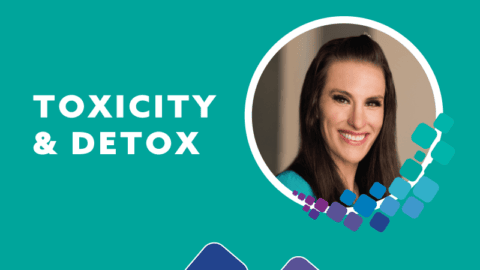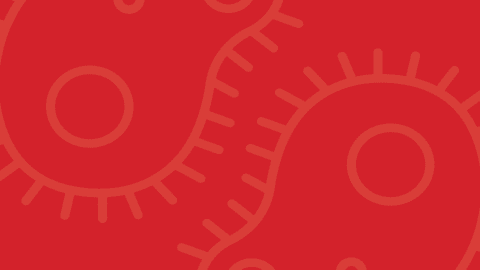The basic tenet of natural medicine is that a healthy lifestyle of adequate rest, consistent exercise, sunlight exposure, along with a whole foods diet, fresh air, and pure water consumption is vital to longevity and wellness. However, despite one’s best efforts to maintain this healthy lifestyle, consistently good sleep can remain elusive for many people (1). For some individuals this can manifest as prolonged insomnia, while others may have periods of inconsistent sleep that leaves them mentally and physically drained.
Insomnia is a disruption of our sleep/wake cycle, aka circadian rhythm, and can be chronic, intermittent, or transient (2). Some individuals have difficulty falling asleep or staying asleep, while others simply do not feel rested upon waking or wake too early. Transient insomnia only occurs for a short duration and is usually related to mental/emotional stressors. It may last for a few days to a week before returning to a normal sleep pattern. Intermittent insomnia occurs on and off but occurs frequently enough to be a concern since sleep patterns are noticeably interrupted and the effects of sleep deprivation can be felt throughout the day. Chronic insomnia is defined by interrupted sleep on most nights lasting longer than one month.
These insomnia types can be linked to various physical, e.g., chronic pain, and/or mental and emotional triggers. Dietary and nutritional imbalances can also contribute to sleep disruption such as excess sugar and/or alcohol consumption, nutrient deficiencies, i.e., B-vitamins and magnesium, and others (3). A newer problem to our modern world is easy access to blue light devices, e.g., smart phones, tablets, and increased electromagnetic frequency (EMF) exposures that disrupt the circadian rhythm of melatonin production (4).
Melatonin is the hormone most associated with sleep. It is secreted by the pineal gland located in the center of the brain. The pineal gland receives input from the environment through the eyes. As the day dims, melatonin output increases and induces a desire for sleep. When the sun rises, melatonin production goes down and cortisol increases. One of the things that can help with increased output of melatonin at nighttime is getting sunlight exposure consistently during the day (5) which increases serotonin (which is made from melatonin) production and making it more available for melatonin conversion at nighttime.
With regards to optimizing natural production of melatonin and the previous EMF discussion, it is important to reduce ultraviolet light sources in the evening after sunset. This can occur if you maintain full-spectrum lighting in the home or use isolated full-spectrum light bulbs in a specific room or lamps with prolonged exposures. Blue light coming from computer, television, and smart phone screens are known inhibitors of melatonin production (6).
The following are a few recommendations for decreasing the negative impact of blue light (and EMF exposure) in your home:
- Red light after sundown using red light bulbs in specific lamps and/or in a bedroom or bathroom at night. Red light does not suppress melatonin like blue light does.
- Decreasing blue light exposure to maintain melatonin production at nighttime is critical. This can be accomplished by avoiding the use of computers, tablets, and cellphones at nighttime. Reducing television viewing can help too.
- No Wi-Fi in bedroom, or better yet turn off the Wi-Fi router for the whole house at nighttime. EMF tricks the pineal gland in shutting down melatonin production.
- Keep your cellphone off the nightstand near your bed, particularly near your head. Place it across the room or in the adjacent bathroom within hearing distance if you need immediate access to calls or messages.
In addition to inducing sleep, melatonin is also one of the most potent antioxidants at the cellular level (7). Melatonin can permeate all cells and provides protection to the cell nucleus which is the central structure that contains our DNA and RNA. When the nucleus of the cell is protected from free radical damage, it maintains the ability to repair itself. If the nucleus of a cell becomes damaged it can either die or mutate to form a cancer cell. Studies have shown that cancer patients typically have very low levels of melatonin. Cellular melatonin is also fundamental to assisting with mitochondrial function necessary for energy production (8).
If enhancing your own melatonin output and subsequent sleep does not work, you can supplement with melatonin in a variety of different forms. Sublingual or liposomal melatonin in varying amounts can be helpful and are better absorbed than standard melatonin capsules. For those who have difficulty falling asleep, taking 1-3mg of melatonin one hour before bed may do the trick. Higher dosages have been used too such as 3 to 10mg at night. Melatonin can trigger vivid dreams or nightmares in sensitive individuals so just be aware.
It can be important to evaluate adrenal function by looking at the cortisol rhythm throughout the day. This is easily done through a salivary test assessing cortisol and DHEA. Adrenal dysfunction can contribute to insomnia through a disruption in the cortisol rhythm. Cortisol is highest in the morning and decreases as the day goes on. If cortisol is high during the night, it will be difficult to maintain a good night’s sleep since this is the hormone that, in part, prepares us for action. Conditions that can raise cortisol during the night are hypoglycemia, chronic pain, stress, and infections.
Finally, it is important for everyone to maintain a healthy diet rich in a variety of fruits and veggies, quality protein and fat, nuts, seeds, and high fiber carbs. Eating a lighter meal in the evening followed by a small snack one hour or so before bed may improve sleep abilities for certain people.
Creating a nighttime ritual of taking a soothing bath with Epsom salts, meditation and/or reading can help one transition between day and night allowing the body to disengage from the events of the day. Products containing valerian, passionflower, GABA and L-theanine can also induce relaxation.
Kurt N. Woeller, DO
References:
- Centers for Disease Control – https://www.cdc.gov/sleep/data_statistics.html.
- National Institutes of Health. What Is Insomia? NHLBI. 13 December 2011.
- Taylor M. Insomnia and nutrition. Aust Fam Physician. 1994 Mar;23(3):498.
- Sollars PJ, Pickard GE. The Neurobiology of Circadian Rhythms. Psychiatr Clin North Am. 2015 Dec;38(4):645-65.
- Wright, K. P., Jr, McHill, A. W., Birks, B. R., Griffin, B. R., Rusterholz, T., & Chinoy, E. D. (2013). Entrainment of the human circadian clock to the natural light-dark cycle. Current Biology, 23(16), 1554–1558.
- Wahl S, Engelhardt M, Schaupp P, Lappe C, Ivanov IV. The inner clock-blue light sets the human rhythm. J Biophotonics. 2019 Dec.
- Reiter RJ, Rosales-Corral S, Tan DX, Jou MJ, Galano A, Xu B. Melatonin as a mitochondria-targeted antioxidant: one of evolution’s best ideas. Cell Mol Life Sci. 2017 Nov;74(21):3863-3881.
- Reiter, R, et.al. Melatonin in Mitochondria:Mitigating Clear and Present Dangers. Physiology 2020 35:2, 86-95.





